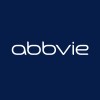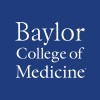
A Phase 3 Study of Fluvoxamine (SME3110) in Pediatric/Adolescent Patients With Obsessive Compulsive...
Obsessive Compulsive DisorderThe objective of the first phase of this study is to evaluate the efficacy of fluvoxamine compared to placebo on change in total score of Japanese version of the Children's Yale-Brown Obsessive Compulsive Scale (JCY-BOCS) 10-item from baseline to the last observation visit (10 weeks) in pediatric/adolescent participants with obsessive compulsive disorder (OCD). The objective of the second phase of the study is to evaluate the long-term safety and efficacy of fluvoxamine in pediatric/adolescent patients with OCD.

Developing Effective Response Inhibition Training for Symptom Relief in OCD and Trichotillomania...
Obsessive Compulsive DisorderTrichotillomaniaObsessive-compulsive disorder (OCD) and its related disorders (e.g., trichotillomania) are characterized by the marked difficulty in inhibiting unwanted or inappropriate responses. There is compelling evidence that poor response inhibition is a core cognitive feature of OCD and its related disorders, but no effective intervention exists that directly attempts to address this problematic cognitive deficiency. This study will examine the feasibility and clinical utility of a computerized cognitive training program designed to improve response inhibition among individuals diagnosed with OCD or trichotillomania.This training program offers systematic practice of response inhibition in the form of a 40-level computer game. Individuals with these conditions will be randomized to either 8 sessions of (a) computerized response inhibition training (RIT) or (b) placebo computer training (PLT). We hypothesize that RIT will outperform PLT in improving response inhibition capabilities and reducing relevant clinical symptoms. In sum, this project is expected to generate important knowledge to guide the development of effective computer-based treatment approaches that may help reduce critical problems of existing treatments such as suboptimal patient retention and treatment under-utilization, thereby improving overall treatment response rates among individuals suffering from OCD and related conditions.

Psychotherapy for Anxiety in Children With Autism Spectrum Disorder
Autism Spectrum DisordersAutism7 moreAnxiety disorders affect 40 to 50% of children with autism spectrum disorders (ASD), contributing to substantial distress and impairment. The goal of this study is to examine the effectiveness of a personalized type of psychotherapy against standard-care psychotherapy for addressing anxiety in youth with ASD.

Methods for Managing Intrusive Thoughts
Obsessive-Compulsive DisorderThe current study sought to translate laboratory research on learning and memory to better understand the mechanisms and methods for implementing exposure therapy for unwanted obsessional thoughts. Specifically, we compared the processes and the short- and long-term outcomes of: (a) gradual exposure (EXP-G), emphasizing hierarchical exposure completion, versus (b) variable exposure (EXP-V), emphasizing variability in exposure intensity.

Stepped-Care Cognitive-Behavioral Treatment for Youth With ASD and Anxiety
Cognitive Behavioral TherapyAutism Spectrum Disorder5 moreThis study implements a parent-led, flexible, individually-tailored cognitive-behavioral intervention for children with ASD and anxiety.

Dealing With Intrusive Thoughts in OCD - a Comparison of Detached Mindfulness and Cognitive Restructuring...
Obsessive-Compulsive DisorderThe purpose of this study is to assess and compare the overall efficacy and differential effects of detached mindfulness and cognitive restructuring in the treatment of patients with obsessive-compulsive disorder.

tDCS Stimulation to Treat Patients With Severe and Resistant Obsessive Compulsive Disorder-Pilot...
Obsessive-compulsive Disorders and SymptomsThe purpose is to show that bifocal tDCS with an anodal stimulation on the orbitofrontal cortex and cathodic stimulation on supplementary motor areas is an effective treatment for patients with resistant and severe obsessive compulsive disorders.

Locating Biomarkers in OCD Through Behavioral Tasks
OCDObsessive-Compulsive DisorderSubjects that have a diagnosis of OCD will participate in a clinical interview and cognitive tasks, during which they will be exposed to their individual OC stressors or will be asked to make decisions related to information value and quantity while measuring neural activity and filming facial reactions. This will assist investigators to look for biomarkers of that change. This study offers a unique opportunity to develop biomarkers for key domains of OCD, and other neuropsychiatric disorders, that are grounded in brain neurocircuitry at the individual-patient level. Subjects will participate in a clinical interview (Day 1), and then tasks+EEG (Day 2). Day 1 will be 4 hours or less, and Day 2 will be 2.5 hours or less.

Cannabinoid Medication for Adults With OCD
Obsessive-Compulsive DisorderThe purpose of this pilot research study is to test the effects of a medication called nabilone (Cesamet) in adults with obsessive-compulsive disorder (OCD). Participants will receive either nabilone on its own, or nabilone in combination with a form of cognitive-behavioral therapy (CBT) called exposure and response prevention (EX/RP). Nabilone is a synthetic cannabinoid and acts on the brain's "endocannabinoid system," which has been hypothesized to play a role in OCD. Nabilone is approved by the FDA for the treatment of chemotherapy-induced nausea and vomiting. It is not FDA-approved for treating OCD.

Rechargeable Neurostimulators in Deep Brain Stimulation for Psychiatric Disorders
Obsessive-compulsive DisorderDepressionFrom 1999 onwards, Deep Brain Stimulation [DBS] has been proposed as an alternative to capsulotomy in refractory cases of Obsessive-Compulsive Disorder [OCD]. More recently, several studies with DBS in patients with major depression have been initiated. In Belgium, there is currently a reimbursement for devices for DBS for OCD, but not for rechargeable neurostimulators, in these OCD patients. Although rechargeable neurostimulators are widely used in spinal cord stimulation for pain and DBS for movement disorders, they have not yet been used in DBS for psychiatric disorders population. Several possible problems might arise with the use of rechargeable neurostimulators in this highly specific population. In this prospective study with a before-after design, we would like to determine if the use of rechargeable neurostimulators is effective, applicable and safe and capable of diminishing the need for neurostimulator replacement procedures.
